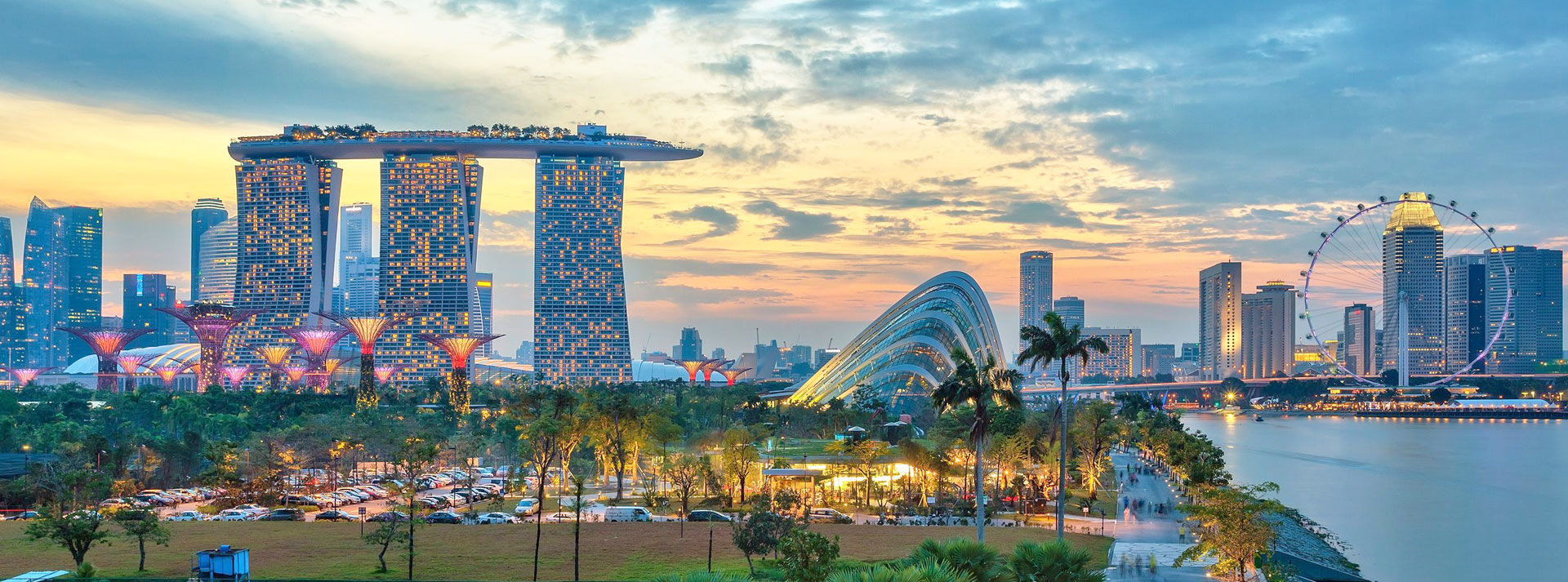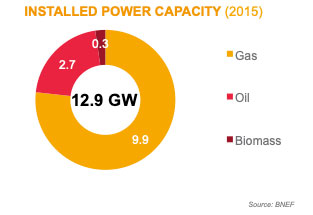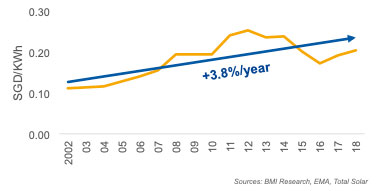
markets Singapore
In Singapore, electricity tariffs fluctuate in line with the tariffs of imported fossil fuels. Since 2002, electricity tariffs have risen at an average of 3.8% per year. In 2018, the government launched a carbon tax in the country, which will render solar more competitive against fossil fuels.
Singapore’s electricity tariffs fluctuate widely, in line with the price of imported fossil fuels

Installed Power Capacity (2015)
Energy sector overview
- Generation comes mostly from gas. C&I customers account for 79% of consumption.
- Demand will grow by 1.3-1.8% a year in 2017-27 (EMA).
- The government launched a carbon tax in 2018, which will render solar more competitive against fossil fuels.

Electricity Prices, Industrial Users
Electricity tariffs evolution (C&I)
- After dropping in line with lower fossil fuel prices in 2014-16, market-based tariffs have resumed their upward trend.
- Currently: 12-15 US cents/kWh.
- Reliance on imported feedstock and sustainability are growing concerns going forward.
Regulation
Government Lead Initiatives:
- National Climate Change Strategy (2012) targets for 2020:
- unconditional reduction of emissions by 7-11% below BAU emissions in 2020 (conditional of 16% reduction)
- unconditional 35% reduction in energy intensity from 2005 levels
- 350MWp of PV by 2020 (from ~ 150 MWp in 2017)
Implementation:
- Since 2014, net-metering scheme allowing electricity consumers (both residential and non-residential) to sell excess electricity from their rooftop PV systems to the grid. The amount paid for excess energy is the “nodal price” i.e. price at the node (physical location in the grid)
Project Reference

Carros Center is Singapore’s largest automobile hub.
The PV solar system installation is part of Carros Center’s sustainability efforts to reduce carbon emissions and support Singapore’s effort in mitigating climate change. The project will allow Carros to save around 300 tons of CO2 per year.
View more

TotalEnergies Lubricants is 100% owned by the TotalEnergies Group.
As part of the Group’s commitment to better energy, TotalEnergies is solarizing its own facilities. More than 5000 petrostations have been solarized worldwide.
View more
